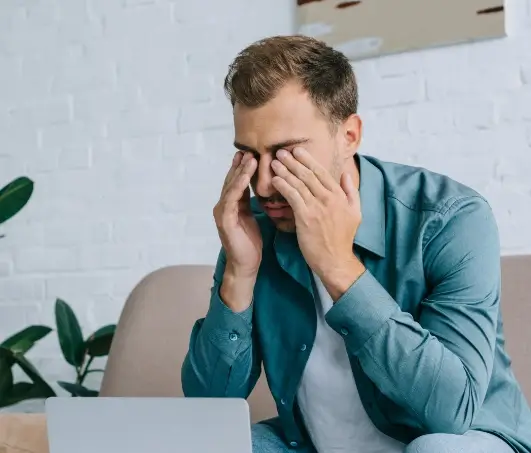Ptosis & Dermatochalasis
Ptosis is a drooping or falling of the upper eyelid. If severe enough and left untreated, the drooping eyelid can cause other conditions, such as amblyopia or astigmatism. This is why this disorder needs to be treated in children at a young age before interfering with vision development. It can affect one or both of the eyes.
There are two types of eyelid drooping, ptosis, short for blepharoptosis, and dermatochalasis. One relates to the impairment of the muscle, while the other refers to an excess of skin and fat.
Ptosis can have many causes, such as dysfunction of the muscle that raises the lid. This can be present from birth (congenital) or acquired through trauma, inflammation, eye-related surgery, or underlying conditions (eg. myasthenia gravis, diabetes, and Horner's syndrome). Another cause is excess skin and fat pushing the lids down (dermatochalasis).

Treatment For Ptosis & Dermatochalasis
Iopidine
For mild ptosis cases, we will sometimes offer a trial run of Iopidine eye drops. These drops are a prescription drug generally used for patients with increased intraocular pressures. However, they have a short-term side-effect of lifting the eyelid(s) up about 1-3mm.
This option is perfect for patients who would rather not undergo surgery and just want a slight lift for special occasions. This Cinderella effect will wear off in about 8 hours. It is, however, not recommended for long-term use.
Treat The Underlying Condition
For the acquired cases from diseases or inflammation, for example, if you treat the contributing cause, then the ptosis may resolve.
Botox
Some forms of ptosis can be corrected by having Botox injected into the brow and forehead to lift the brow. Alberta Health does not cover this treatment, and you'll need repeat treatment every 3-4 months.
Surgery
There are many surgical options available depending on the type of ptosis you have.
For ptosis caused by muscular dysfunction, the surgeon can tighten the muscle that holds the lid up or place a suspension sling to help the weakened muscle.
For ptosis that is secondary to excess skin and/or fat, or even a drooping brow, the surgeon will need to correct the contributing problem. Doctors can perform a brow lift to elevate the brow, or a blepharoplasty can be done to remove the skin and/or fat.
Unfortunately, Alberta Health does not always cover the surgeries. Current guidelines are that the upper lids need to be drooping and obscuring 50% of the visual axis to be covered. Contact our office for more information.